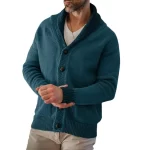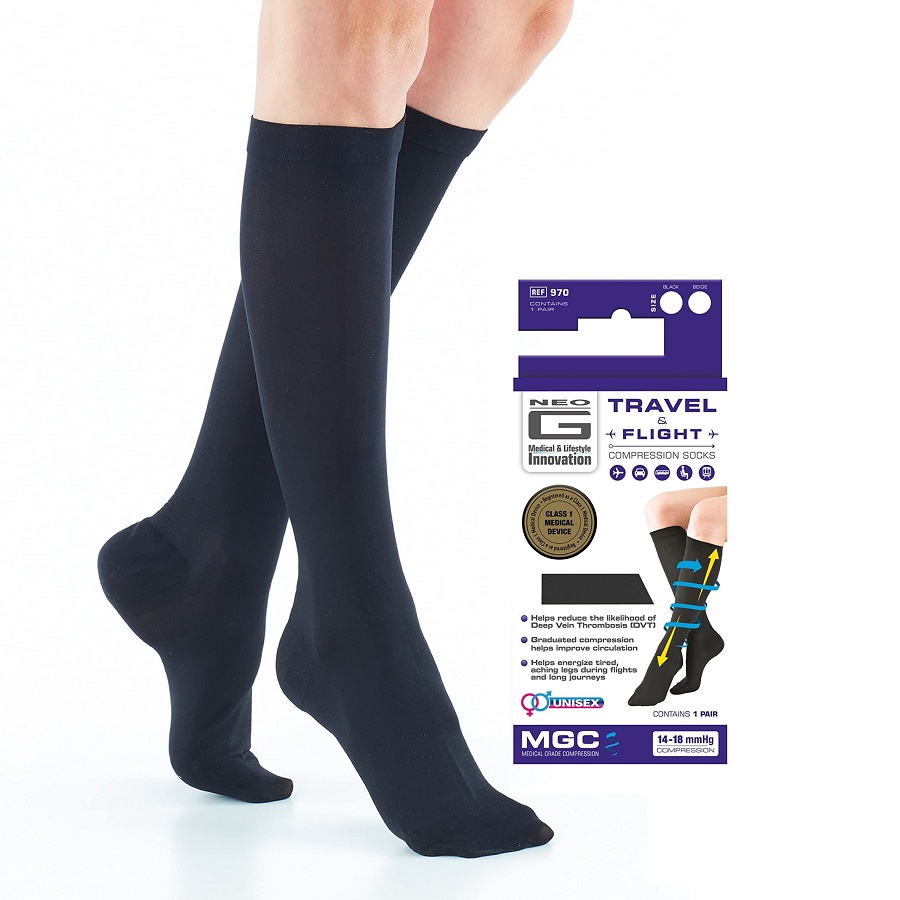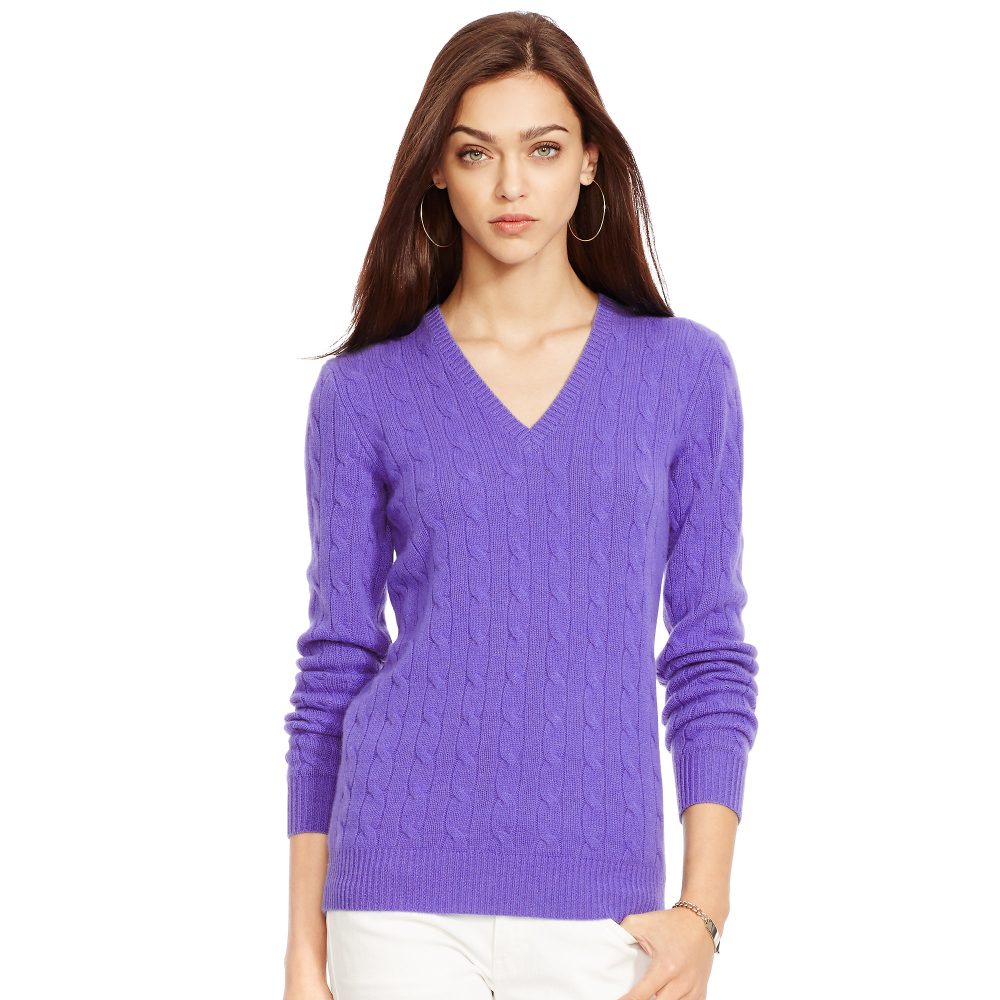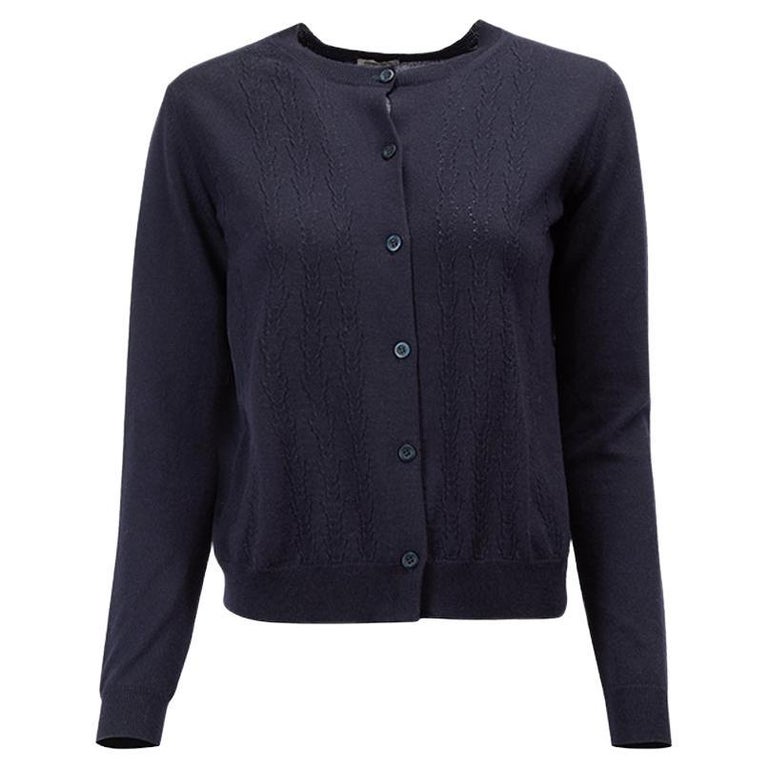Benefits of Wearing Compression Socks During Flights
Wearing compression socks on a flight can offer numerous benefits. First, they help reduce the risk of developing deep vein thrombosis (DVT). This is a condition where blood clots form in the deep veins of your legs. Long periods of inactivity, like sitting on a flight, can increase this risk. Compression socks apply gentle pressure to your legs. This pressure supports blood flow back to the heart and reduces swelling.
Another benefit is minimized leg fatigue. Travelers often feel tired in their legs after a flight. Compression socks boost circulation, which can lessen this fatigue. They also help control leg cramps and discomfort that might come from being in a cramped space for hours. Frequent fliers might notice less leg pain when using compression socks regularly.
Finally, compression socks can also assist in preventing varicose veins. These are the enlarged, swollen, and twisting veins that often appear blue or dark purple. By improving blood flow, compression socks help in maintaining healthier veins over time.
For those wondering when to put on compression socks for flying, it’s best to wear them before boarding. They should stay on throughout the flight for maximum benefit. As a rule of thumb, the earlier you put them on, the better it is for your circulation. Always remember that staying comfortable during a flight is key to a good travel experience. Adding compression socks to your flying routine can make a significant difference.
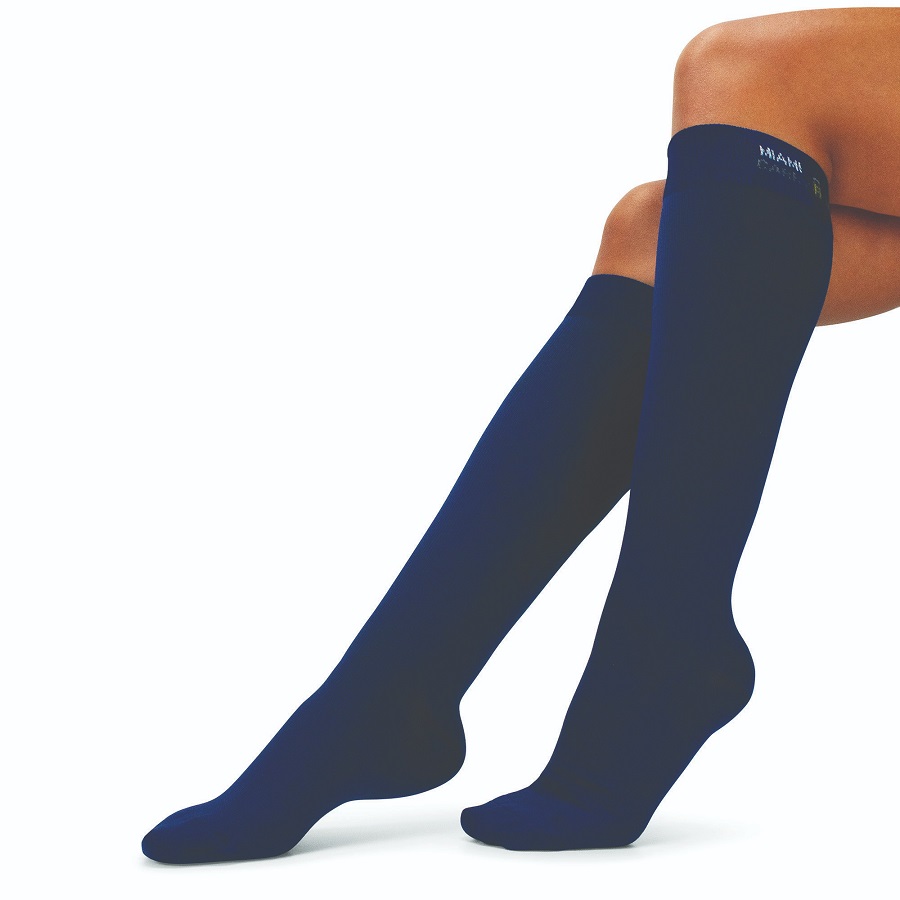
How Compression Socks Work to Improve Circulation
Compression socks boost leg blood flow. They apply a steady pressure that gradually decreases up the leg. This design encourages blood to move up towards the heart. It fights gravity’s pull when you’re sitting for hours. Your leg veins work better with this support.
They also speed up blood flow. Faster blood reduces the chance of clots and swelling. With better circulation, your legs get more oxygen and nutrients. This helps keep them fresh and less tired on long flights.
The socks work best when fitted correctly. They should feel snug but not too tight. You want to avoid cutting off circulation, which can happen with a poor fit. Thus, knowing when to put on compression socks for flying and ensuring a good fit are vital for effectiveness.
Remember, the goal is to enhance your comfort and health during flights. By understanding how compression socks work, you can make an informed decision on when to wear them. Frequent flyers, take note: Compression socks could be a great addition to your travel gear for healthier legs and a more comfortable journey.
Optimal Timing to Put on Compression Socks Before Flying
Knowing when to put on compression socks for flying is crucial for their effectiveness. Ideally, you should wear them before you start your journey. For the best results, aim to put on your compression socks 1-2 hours before the flight takes off. This timing allows your legs to adjust to the pressure and starts the benefits of improved circulation early.
It’s also wise to keep them on during your entire flight. The consistent pressure will continue to support your veins against the prolonged inactivity. Some travelers might even choose to put on their compression socks from the moment they leave home, ensuring that they are benefiting from enhanced blood flow even before arriving at the airport.
In case you forget to wear the socks before leaving, it’s still beneficial to put them on as soon as you’re seated on the plane. Even if worn after takeoff, compression socks can still help in reducing the risk of DVT and leg discomfort throughout the journey.
Remember, the goal is to maintain good circulation and comfort. Starting early and wearing your compression socks for the entire duration of the flight can aid in this process. Frequent flyers especially should make a habit of this practice for healthy and comfortable travel.
Choosing the Right Compression Socks for Your Needs
When looking for the right compression socks for flying, there are a few things to consider. First, think about the level of compression you need. Compression levels are measured in millimeters of mercury (mmHg). Mild compression ranges from 8-15 mmHg. Medium compression levels are 15-20 mmHg. Firm compression falls between 20-30 mmHg. Your choice should match your health needs and comfort.
The length of the socks is also important. Knee-high socks are standard for preventing DVT. Thigh-high or full-length tights may offer more support. They can be better for those with vein problems. Consider also the material of the socks. Look for breathable fabrics to keep your legs cool. Moisture-wicking materials help in managing sweat during flights.
Next, check for a proper fit. A good fit is snug but does not dig into your skin. Your toes should have space to move. The top band should stay up without sliding. Make sure there is no bunching of extra material. This could restrict your circulation.
Remember, when you decide when to put on compression socks for flying, wearing the right type can help. For the best in-flight experience, choose wisely. Comfort and health go hand in hand when you are miles up in the air. Frequent flyers should invest in quality compression socks. With the right pair, you can enjoy a worry-free, comfortable journey.
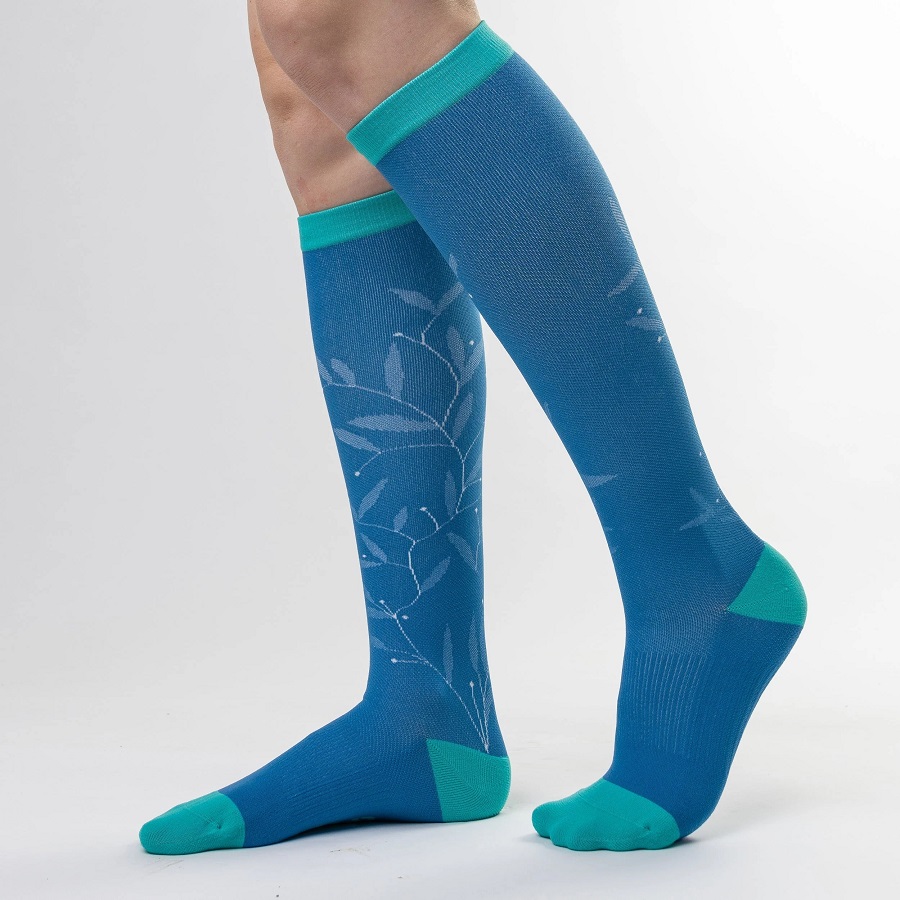
Tips for Combining Compression Socks with Proper In-Flight Hydration
Wearing compression socks during flights can boost your leg health. But don’t forget hydration. Drinking enough water keeps your blood thinner, making it flow better. Together, they are a powerful duo against travel health issues like DVT.
Start drinking water before you board. This preps your body for the flight. Aim for a glass of water every hour. This rate helps replace lost fluids while flying. Avoid alcohol or caffeine. They can dehydrate you, counteracting the benefits of your socks.
Also, take short walks if possible. Doing so will aid circulation even more. Combine this with sipping water and wearing socks. You’re setting yourself up for a smooth, comfy flight. Small efforts, like hydrating and walking, work with compression socks. They ensure your legs stay happy and healthy in the air.
Remember to listen to your body. If you feel thirsty or your legs ache, respond with care. Slip on your compression socks, grab a water bottle, and take a brief walk. Doing so keeps the circulation and hydration in check. It’s simple: stay hydrated while wearing your socks when flying. Your body will thank you after landing. Frequent flyers especially will notice the comfort it brings to their travel routine.
Recommended Duration for Wearing Compression Socks After a Flight
Frequent flyers often ask about the ideal time to keep their compression socks on after flying. For the benefits to last, it’s best to continue wearing them for a few hours post-flight. Here are some concise recommendations:
- Aim to wear compression socks for 2 to 4 hours after your flight lands. This extended period helps stabilize blood flow post-travel.
- If you experienced a lot of leg swelling during your flight [when to put on compression socks for flying], extend the time you wear them. This can provide extra support until swelling reduces.
- For long-haul flights, consider wearing compression socks up to 24 hours after landing. Your body takes more time to adjust after such long periods of inactivity.
- Listen to your body’s needs. If you feel discomfort or swelling, keep the socks on longer. Comfort and health should guide your decision.
Remember, the primary goal is to prevent DVT and improve leg comfort. By managing when to put on compression socks for flying and for how long to wear them afterwards, you can further reduce the risks associated with long-duration flights. Frequent flyers find this post-flight practice an essential part of their travel routine to feel refreshed and ready to go post-landing.
Potential Risks and How to Avoid Them
When using compression socks, it’s important to be aware of potential risks. You can avoid them with the correct practices. Here’s how:
- Choose the right size: Socks that are too tight can hinder circulation. Make sure they fit well without being constrictive.
- Follow proper guidelines for use: Don’t wear the socks for too long without breaks. Adhere to recommended durations, especially after a flight.
- Check with a healthcare provider: If you have existing health issues, consult a doctor. Find out if compression socks are safe for you.
- Monitor for discomfort: If socks cause pain or skin changes, stop use. Look for redness or feel for unusual pain.
- Stay informed on correct use: Learn about when to put on compression socks for flying. This helps you get the full benefit with fewer risks.
By understanding when to put on compression socks for flying and these simple tips, you can reduce potential problems. Remember to stay cautious and attentive to how your legs feel during and after flights. These best practices ensure that compression socks remain a helpful tool for frequent flyers.
Real Experiences: Frequent Flyers? Testimonials on Compression Socks
Hearing from those who travel often can provide great insight into the true value of compression socks. Here are some testimonials from frequent flyers who have incorporated compression socks into their travel routines.
- John, Business Traveler: “I wear compression socks on every flight now. My legs feel so much better upon landing. No swelling either.”
- Sarah, Travel Blogger: “After using them for a transatlantic trip, I won’t fly without them. They’re a game-changer.”
- Raj, Consultant: “Since I started wearing compression socks, my jet lag feels less intense. My legs are not as tired.”
- Emily, Flight Attendant: “I’ve seen many passengers use them. I decided to try them and noticed a big difference. Less fatigue and more energy after long flights!”
- Alex, Adventure Traveler: “I used to have issues with swollen ankles, but compression socks solved that. I hike right after landing now with no problems.”
These accounts highlight the benefits that match our earlier discussion on when to put on compression socks for flying. Users report less swelling, reduced fatigue, and overall better leg health. It’s clear that making this simple change to their travel attire pays off in comfort and well-being.
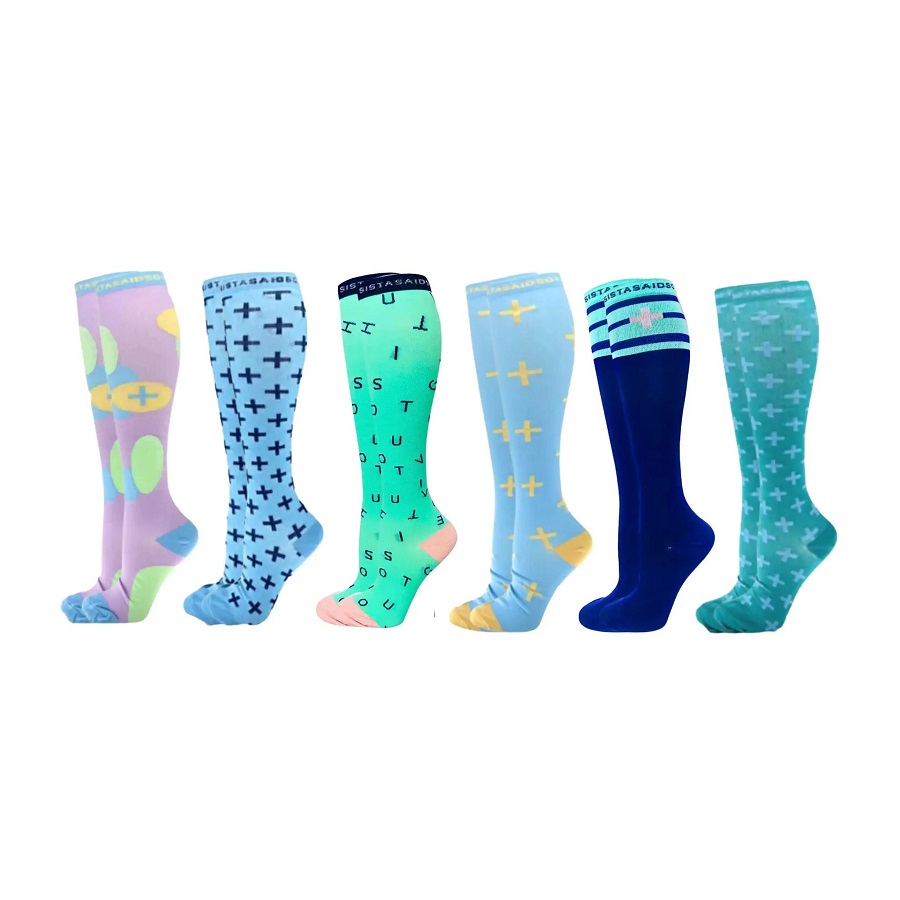
Remember, these experiences might differ from person to person. It’s best to try compression socks for yourself. See how they fit into your travel lifestyle and address when to put on compression socks for flying in your routine. Based on these testimonials, frequent flyers can confidently add compression socks to their must-have travel items list for a more enjoyable experience in the sky.





